What’s Leaking?
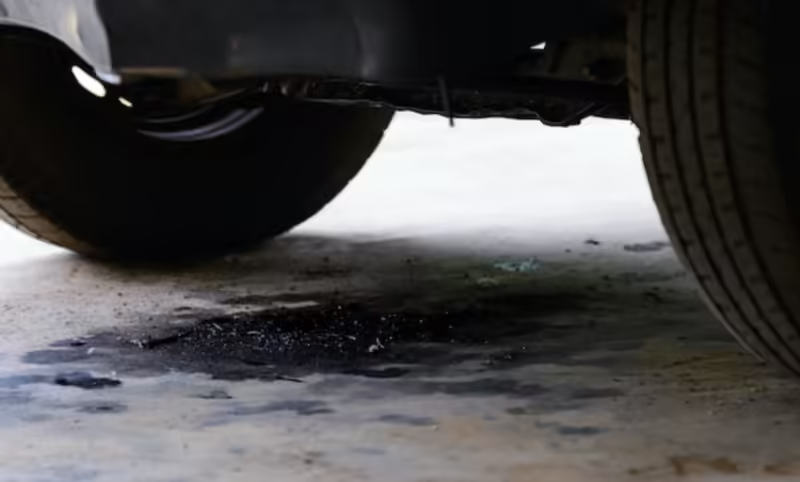
Car leakages are a common problem that many vehicle owners encounter. If you’ve ever noticed a mysterious puddle under your car, you’re not alone. But not all leaks are created equal. Knowing what type of fluid is leaking can help you understand if it’s a minor issue or a serious problem that needs immediate attention. In this guide, we’ll break down the types of common car fluids, their appearances, and what you should do if you notice them leaking.
This blog Contains
1. Brake Fluid: Serious Alert
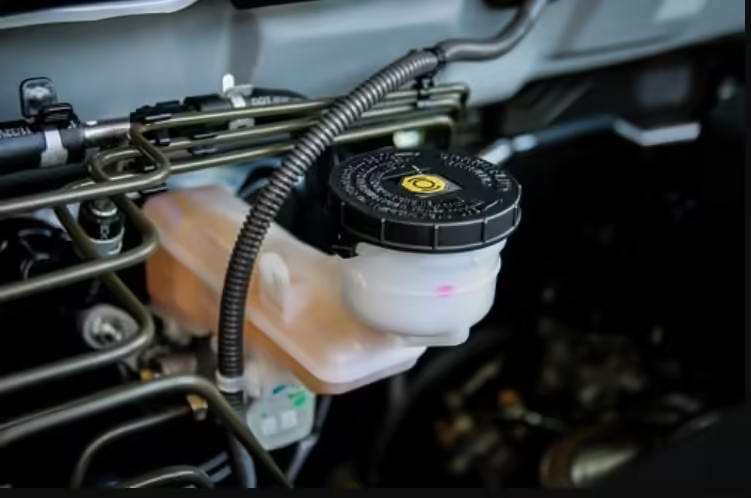
If you spot a clear to light brown, oily substance under your car, you may be dealing with a brake fluid leak. Brake fluid feels similar to mineral oil and is crucial for your vehicle’s braking system.
- Color: Clear to light brown
- Texture: Oily, like mineral oil
- Alert Level: Serious
A brake fluid leak is a severe issue, as it can lead to brake failure. Without enough brake fluid, your car’s brakes may not work as effectively, posing a significant safety risk. If you suspect a brake fluid leak, go to a mechanic immediately. Ignoring it could lead to dangerous driving conditions or a costly repair down the line.
2. Engine Oil: Moderate Concern
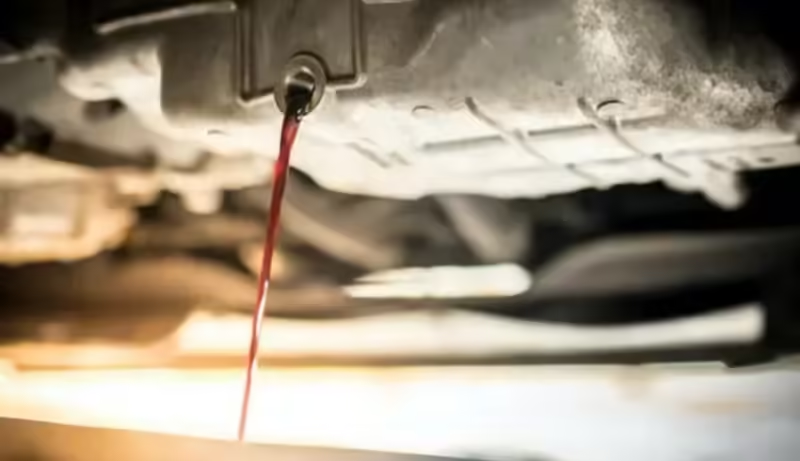
Engine oil leaking are common and can range in severity. You might find light brown to black, syrup-like fluid dripping under the engine area.
- Color: Light brown to black
- Texture: Thin syrup
- Alert Level: Moderate
An engine oil leak can be dangerous if left unchecked, as oil is essential for keeping your engine lubricated and running smoothly. Book a service to trace the origin of the leak. Regular oil checks can help you monitor levels and spot potential issues early on.
3. Antifreeze/Coolant: Moderate Concern
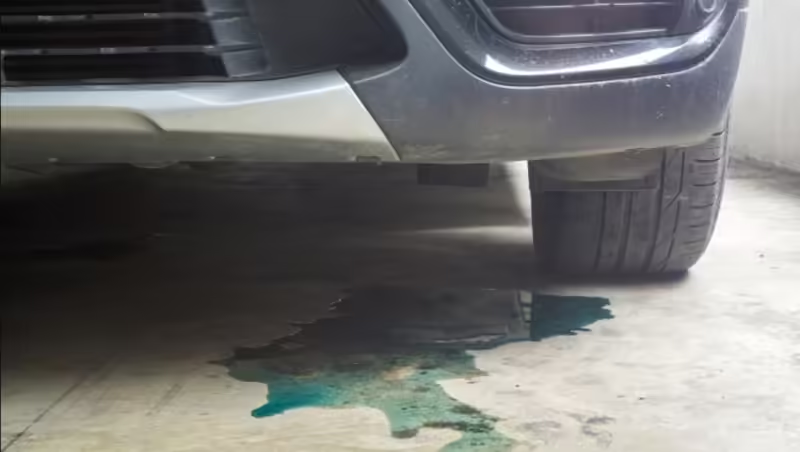
Antifreeze or coolant leaks are usually easy to spot because of their bright color, which is typically green, pink, or yellow. The fluid is sticky to the touch.
- Color: Green, pink, or yellow
- Texture: Sticky
- Alert Level: Moderate
An antifreeze leak can cause your engine to overheat, which could lead to severe engine damage. If you notice this kind of fluid leaking, it’s a sign of trouble, and you should seek a mechanic immediately. Regular coolant checks can prevent overheating and help maintain your engine’s health.
4. Power Steering Fluid: Serious Alert
If you notice a red to brown fluid dripping from the front of your car, it may be power steering fluid. This fluid is essential for smooth steering.
- Color: Red to brown
- Texture: Thin drips from the front of the car
- Alert Level: Serious
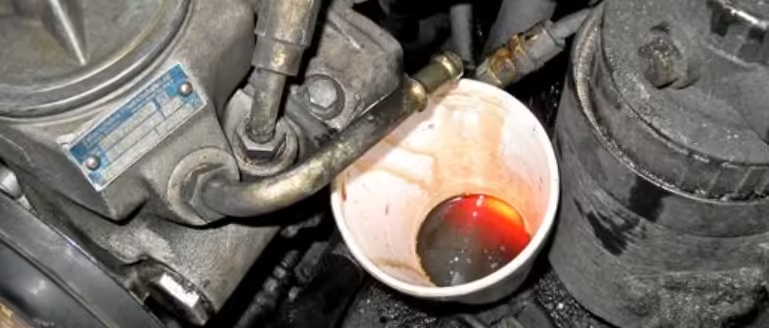
A power steering fluid leak can make your car challenging to control, especially at lower speeds. If left unattended, this leak could lead to costly repairs and, more importantly, impact your safety. Get this checked out by a mechanic immediately to prevent long-term damage and ensure safe driving.
5. Transmission Fluid: Moderate Concern
Transmission fluid is red to brown in color and usually has a thick consistency. If you see it dripping from the middle of your car, this could indicate a leak.
- Color: Red to brown
- Texture: Thick drips from the middle of the car
- Alert Level: Moderate
Transmission fluid helps with the smooth shifting of gears. A leak in this fluid can lead to problems in shifting, overheating, or even complete transmission failure. Contact a mechanic so they can inspect and repair the fluid leak. Addressing transmission fluid leaks early can save you from expensive transmission repairs.
6. Water: Low Concern
Sometimes, you may find a thin, clear liquid pooling under your car, especially on hot days after running the air conditioning. This is usually just water from the AC condensation.
- Color: Clear
- Texture: Thin
- Alert Level: Low
This leak doesn’t indicate any serious issue and is usually nothing to worry about. However, if you suspect it’s not just condensation, you can always get it checked for peace of mind.
10 Proven Steps to Retire Early and Live Your Dream Life
Why You Should Pay Attention to Fluid Leaks
Fluid leaks can be a car’s way of telling you something is wrong. Identifying leaks early can save you time and money by addressing problems before they escalate. Regular maintenance and inspections are key to preventing leaks, as worn seals, gaskets, or hoses are often the culprits.
Tips for Preventing Fluid Leaks
- Routine Checks: Regularly check your vehicle’s fluid levels, including brake fluid, engine oil, coolant, power steering fluid, and transmission fluid.
- Scheduled Maintenance: Follow the maintenance schedule recommended by your car’s manufacturer. This includes changing the fluids as per the prescribed intervals.
- Inspect Seals and Hoses: Over time, seals and hoses can wear out. Look out for cracks or wear and tear, which are often the sources of leaks.
- Watch the Warning Lights: Modern cars often have dashboard warning lights that indicate low fluid levels. If any of these lights come on, don’t ignore them.
Conclusion
Understanding the different types of fluids that can leak from your vehicle and knowing their potential impact can help you make informed decisions. While some leaks are harmless, others require immediate attention. By staying vigilant and addressing leaks promptly, you can avoid costly repairs and keep your car running smoothly.
What leaks have you noticed under your car? Share your experience below and let us know how you handled it!
Your can visit : https://www.carcomplaints.com/ for more
